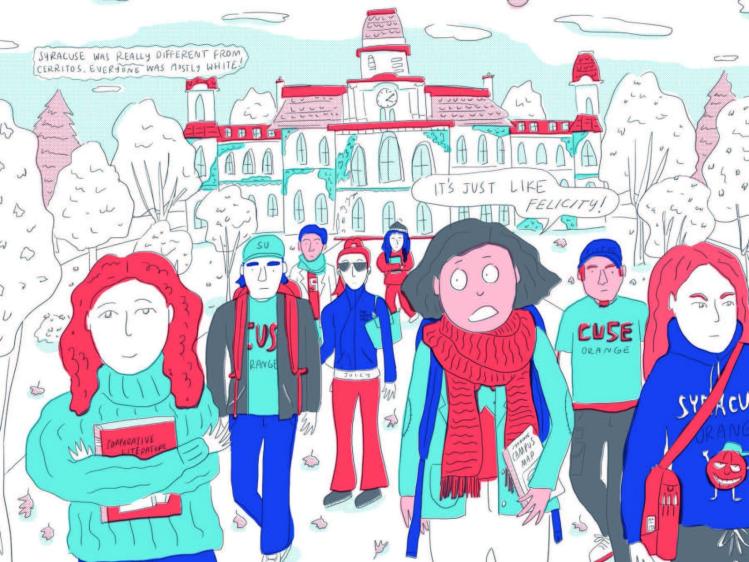
I moved to New York City this summer, and despite growing up in another big city (Chicago), my new home has sometimes felt isolating and exhausting. It’s difficult to navigate a place when all the people who know me best live too far away to share a meal or an embrace. Fleeing climate change–induced natural disasters, political unrest, or civil war, or simply seeking new economic opportunities, immigrants and refugees face journeys far more challenging than my own. Yet they too encounter homesickness, and struggle to establish their identities in unfamiliar, sometimes unwelcoming territory.
Such is the case for Ghayath Almadhoun, a Palestinian poet who escaped the Syrian civil war and settled in Stockholm in 2008. In his collection Adrenalin (Action Books, $18, 96 pp.), Almadhoun is a wolf separated from his pack, longing for Damascus. Anguished, hopeful, violent, and darkly ironic by turns, Almadhoun deftly traverses the landscape of civil war (“a moral earthquake striking the world”) and personal heartache (“my heart that could bear five barbaric wars stutters when it says your name”). Tempering the difficulty of his themes is the beauty and surprising black humor of his language. Adrenalin is Almadhoun’s first collection to be translated into English, and translator Catherine Cobham captures his emotional depth, elegantly spare verses, and fluid transitions between lines, paragraphs, and time periods. Yes, there is the war. There is massacre, “a dead metaphor that is eating my friends, eating them without salt.” But just as immediately, there is the poet who loves, and is saved by loving.
Yaa Gyasi’s novel Homegoing (Vintage, $16.95, 320 pp.) describes a different kind of migration, from Ghana to the United States via a slave ship. Esi and her descendents live in the United States; Effia, the sister she never met, continues her lineage in Africa. Homegoing comprises fourteen short stories, each of which focuses on a different member of Esi and Effia’s family: alternating between continents, following each successive generation up to the twenty-first century. From Asante huts to a church in Harlem, from the beaches of Cape Coast to the unrelenting sun over Alabama cotton fields, each of Gyasi’s chapters introduces a new, thoroughly believable world. Though intergenerational relationships do develop, each cast is largely contained within their respective chapters. This episodic structure allows even the darkest stories to conclude in hopeful places.
Gyasi, a Ghanaian immigrant herself, doesn’t shy away from complexity. One of her narrators, a history teacher in Takoradi, challenges his students: “Whose story am I missing? Whose voice was suppressed so that this voice could come forth? Once you have figured that out, you must find that story too.” Homegoing examines the complicity of African tribes that collaborated with British slave traders. Its long, multi-generational arcs show the bonds between parents and children broken and mended in turn. And there is plenty of mending in this novel. I was struck and encouraged by how good every character is—how each narrator ultimately makes choices they hope will allow them to protect or rebuild what they care for.
Malaka Gharib’s graphic memoir, I Was Their American Dream (Clarkson Potter, $16.99, 160 pp.), contains that same goodwill. Gharib’s text and drawings—done entirely in shades of red, white, blue, and black—tell her story of growing up as a first-generation Filipino-Egyptian-American. Her Filipino mother and Egyptian father meet in the United States, where they hope to achieve a life in the suburbs with a two-car garage and annual trips to Disney World. This life never comes to pass. Instead, Malaka (as she is called in the book) grows up trying to navigate several different cultures simultaneously, with mixed results. Her father is Muslim, her mother Catholic. One page features young Malaka lying in bed at night, praying to “God and the Virgin Mary, but sorry, not you, Jesus.”
After her parents’ divorce, Malaka spends summers with her father in Egypt—but though she likes the country, she never feels quite at home there. She’s too American. Similarly, she isn’t quite Filipino enough to meet the standards of her classmates, who criticize her for trying to be cool by liking “white stuff.” Moving to the East Coast for college, she struggles once again to find a community where she fits in. Several pages are dedicated to her desire to talk about her background with disinterested fellow students who “don’t see color” or are unimpressed by her heritage. Another full spread shows her culinary fantasy: floating on clouds of fluffy rice, munching on crispy fried spam from home.
Malaka is lighthearted even when tackling serious issues, like the lack of minority representation in media—on one page, high-school-aged Malaka describes white people as “real Americans” who “do normal stuff like eat sandwiches for lunch.” Years later, working in an office after college, she ticks the boxes off a pledge to “be the real me.” Items include: “Stop pretending I like eating sandwiches.”
For such a quick read, I Was Their American Dream includes a lot of thoughtful analysis. Scanning the pictures and text, the reader participates in Malaka’s project of becoming herself, providing the audience she wanted in college. Her American story is exuberant; encountering it, I was left more joyful, more aware, more grateful than ever for my own family and friends. They support me in each new chapter, wherever I make my home.

